With panoramic shots of a wind-swept tundra and a skyline studded with jagged mountaintops, the opening scene of True Detective Season 4 Episode 1 strikes a grandiose tone.
It feels closer to Game of Thrones’ Wildling storylines than to the claustrophobic, gritty interiors that we’ve come to expect from HBO’s divisive cop drama.
Even after the requisite large firearm makes its first appearance — via a frightened hunter aiming his rifle at a herd of stampeding reindeer — there’s little to give the viewer the sense that we’re in 21st-century America, rather than someplace much more exotic and archaic.
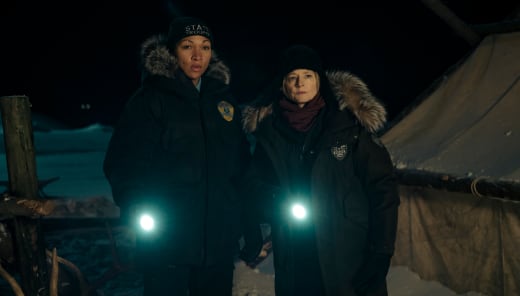
It’s only when the action shifts inside that the show’s fourth season — helmed by Issa Lopez, who replaces series creator Nic Pizzolatto as showrunner — begins to bear any resemblance to its first three.
The Tsalas Research Station — located just outside of Ennis, Alaska — is well-lit when we first enter, but despite the illumination, something feels a bit off.
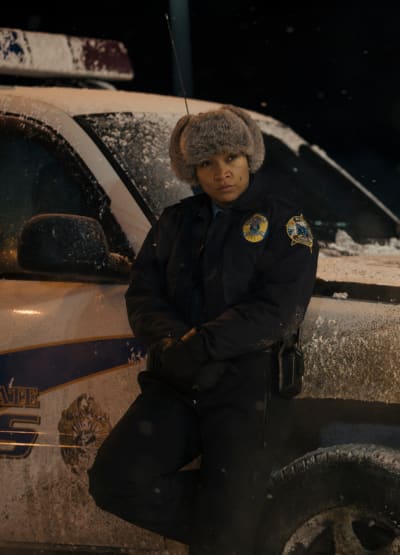
Maybe it’s the incongruity of this bright, modern facility in the center of all that snowy darkness. Or perhaps we’re just overly conscious of the fact that this is an episode of True Detective.
Whatever the case, our expectation of dread is quickly met, as one of the men stationed at the facility — a highly stressed fella, from the looks of him — whispers, “She’s awake” seconds before the lights go out.
What happened in the dark? Well, it seems that’s the mystery we’ll be exploring in True Detective: Night Country.
(Yes, in another change of pace, True Detective Season 4 is the first to carry a subtitle.)
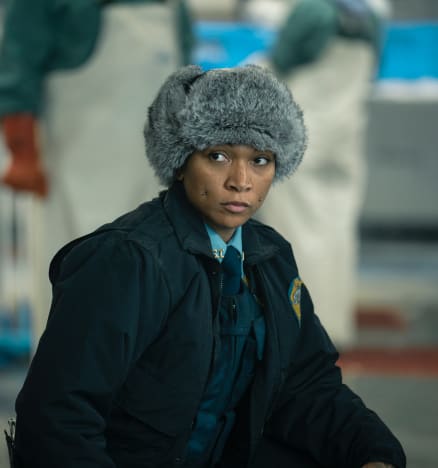
As a delivery man surveys the eerily silent facility and discovers a disembodied tongue on the floor, horror fans might find themselves drawing comparisons to John Carpenter’s 1982 classic The Thing.
All the elements are there: the isolated wintry setting, the crew of increasingly edgy dudes, and, of course, the willingness to “go there” in terms of violent acts of dismemberment.
There’s even a call-back to the Reagan era in the form of the classic ‘80s comedy Ferris Bueller’s Day Off, one scene from which plays on an eerie loop on the facility’s TV.
The homage is clearly intentional (note the copy of a Thing DVD on the laboratory shelf later in the episode), and we’re a little giddy with the hope that Lopez has more such Easter eggs in store.
Night Country probably won’t be bringing its protagonists into conflict with any extra-terrestrial monsters — but hey, you never know!
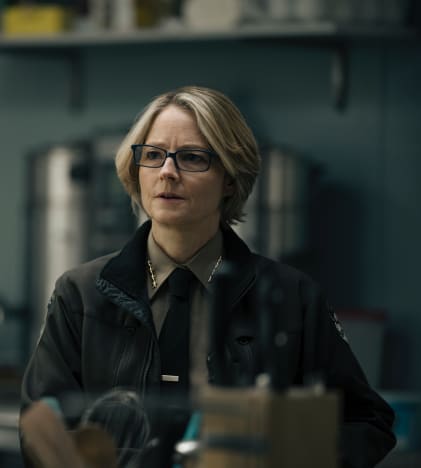
After that chilling cold open (multiple puns intended), we cut to a fittingly spooky opening credits sequence.
(Diehards might gripe about the show’s use of a hit Billie Eilish single in place of the deep-cut tunes that served as previous seasons’ themes songs, but “When We All Fall Asleep, Where Do We Go?” matches the credits’ sinister visuals to a T.)
The focus then shifts to a very different — and sadly all-too-common — form of violence, as Kali Reis’ state trooper Evangeline Navarro responds to a call at a fish cannery, where a town drunk (the first of many we’ll meet this season) has been subdued after showing up unannounced at his wife’s place of work.
After learning that a female cannery worker defended her friend by knocking the guy out, Navarro casually arrests the wife-beater while taking a call on her cellphone.
It’s a brutally effective scene that serves to establish Navarro’s badassery, as well as a theme that’s sure to be revisited throughout the season:

This is a brutal, male-dominated world where women are forced to fend for themselves or fall victim to men who are every bit as savage as the climate.
After a few more snowy establishing shots (the show was filmed in Iceland, a serviceable stand-in for Alaska), we meet Chief of Police Liz Danvers (Jodie Foster) and her partner, Hank Prior (John Hawkes) as they arrive on the scene decked out in full winter cop regalia, a la Frances McDormand in Fargo.
Danvers quickly gets to the bottom of the repeating Bueller situation, and surprisingly, Ben Stein was not the culprit. (Our younger readers will just have to trust us that that joke was mildly funny.)
And with that, we’re off to the races.
Right off the bat, we have the usual True Detective indications that this particular crime has metaphysical implications that will test the investigators’ faith in a just and merciful universe. The research team was studying climate change; one of the guys was reading Cormac McCarthy’s Blood Meridian, etc.
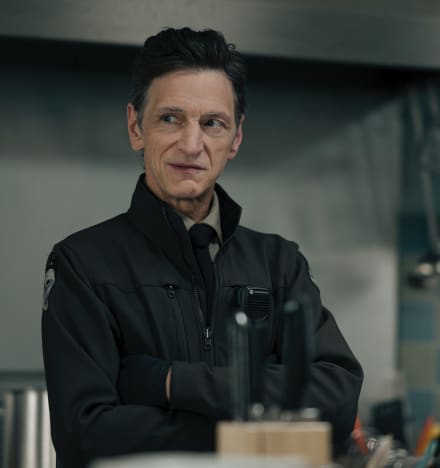
Danvers quickly establishes herself as the top cop in the room by using a mom’s knowledge of decaying discarded food to determine that the men have been gone for at least 48 hours.
The scene establishes not only Danvers’ powers of deduction but also the theme of parenthood and its challenges, which is a common area of interest for True Detective and is certain to be revisited.
We learn that fresh-faced cop Peter Prior is Hank’s son, and from the tension between them (and a snide remark from Danvers), we get the impression that the relationship between them is not of the Ward and Beaver Cleaver variety.
Danvers’ eye for detail also leads her to the conclusion that the tongue on the floor once belonged to a Native American woman.
Like the Billie theme song, the eccentric detective wowing her colleagues with her quirky but effective approach to the case might be a tad conventional for some viewers who enjoyed the almost Lynchian weirdness of the OG True Detective.
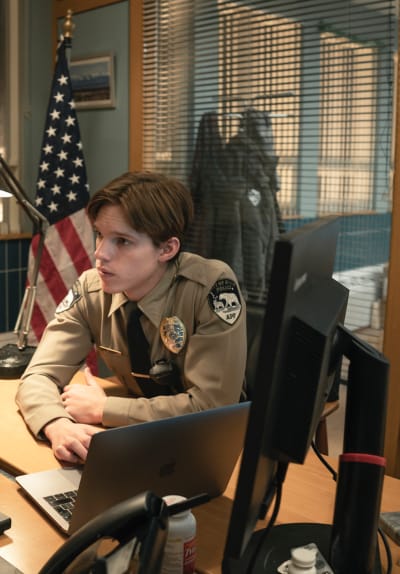
.
But around the 15-minute mark, Lopez demonstrates that — like Pizolatto before her — she’s willing to go so dark with the noir tropes that she almost takes us into horror territory.
It’s then that Danvers discovers a whiteboard on which the words “WE ARE ALL DEAD” are scrawled in eight-inch letters.
It could be a sign that this season will get into territory as grimly existential, as quasi-mystical as Matthew McConaughey’s “time is a flat circle” tirades from Season 1.
That could be a good thing — or not. Obviously, no one wants the True Detective franchise to lapse into stock-standard police procedural territory, but hopefully, Lopez doesn’t feel undue pressure to follow her predecessor into Philosophical Hellscape Land.
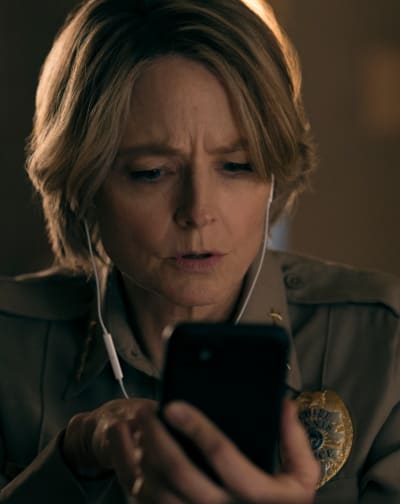
And hey, the whiteboard message could’ve been someone’s idea of a silly little prank! After all, you can’t have a twisty mystery without a few red herrings along the way!
From there, we’re treated to one of the most memorable — and creepy — character introductions in True Detective history (which is really saying something).
Fiona Shaw’s Rose Aguineau is skinning a wolf on the subzero tundra (as one does) when a shoeless man sneaks up on her.
She’s not startled, but she greets this “Travis” fellow with some clear distress in her voice.
She asks what he wants, but this is True Detective — we’re not about to get answers to philosophically dense questions in the season premiere!
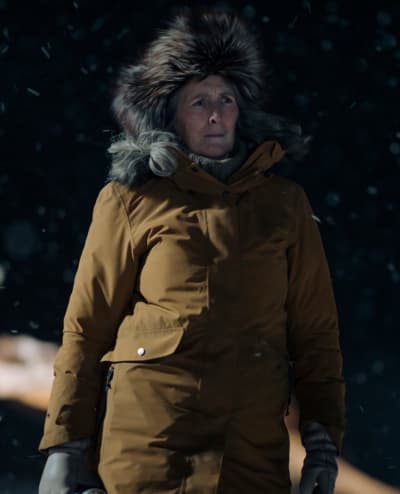
We do, however, get treated to a gangbuster meet-not-so-cute moment when Danvers and Navarro’s paths cross.
Navarro has caught wind of the tongue found on the floor, and she believes it could be tied to a cold case that’s obviously of tremendous importance to her.
But there’s tension between the women, who used to be colleagues before Navarro elected to become a state trooper. Yes, these bitter rivals will wind up working together to crack the case, but Lopez shouldn’t be faulted for trotting out that particular trope.
Some conventions of the gritty cop genre are virtually unavoidable.
Speaking of familiar territory, it turns out that Danvers is brilliant at her job but a bit of a bungler when it comes to her personal life.

She responds to a phone call from an angry parent who informs her that their teen daughters have been making sexually explicit videos together.
While scolding her on the ride home, Danvers nearly collides with another driver who turns out to be heavily intoxicated — and a habitual offender (town drunk number two!).
There are momentary flashbacks and hints of buried trauma as Danvers confronts the boozer in the other car, and once again, we’re reminded that Lopez intends to hold true to what this franchise has come to represent:
These are troubled cops, and the show’s exploration of Danvers and Navarro’s psyches may prove as disturbing as their investigation of the central mystery.

For her part, it seems that Navarro’s trauma is linked to the investigation.
She believes the tongue at the research lab belonged to someone named Annie, and she meets up with Annie’s brother, Ryan, to assure him that she’s still on the case.
At the time of her death, Annie was protesting the construction of a mine that many considered essential for the town’s economic survival.
Those protests brought her into conflict with her brother and, it seems, Navarro’s fellow officers.
When Ryan asks Navarro if she believes in God, she bucks the True Detective trend by answering in the affirmative — but her reply comes with a qualifier.
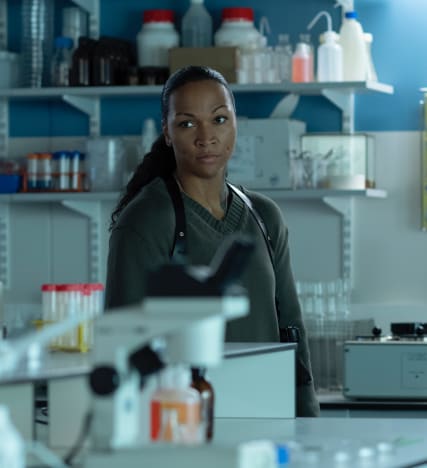
Her faith is based on a grisly encounter with a wounded soldier during her time in the military, and while she believes in a higher power, she also believes we’re “alone,” adding, “So is God.”
The rush of character development continues as we learn that Navarro has a sister named Jules, who’s prone to episodes of severe mental illness.
Phew. It’s a lot of exposition for a half-hour of television, but let’s pause for a moment to enjoy the gorgeous cinematography on display here.
Lopez demonstrates a knack for beautifully bleak exteriors that bring to mind the work of Chloe Zhao and does as much as the dialogue (some of which veers a bit into info-dump territory) to establish the backstory of this forgotten town and its beaten-down residents.
The surreal beauty of True Detective Season 1 helped to instantly set it apart from the police procedural pack, and Lopez clearly intends to carry the torch.

From there, we get some welcome comic relief as Danvers insists that Stacy, the DUI perp, remain in the drunk tank for the night.
Apparently, she’s been known to provide, um … favors to Hank Prior, who informs Danvers that he has a mail-order bride on the way from Vladivostok.
This conversation takes place in front of Hank’s son, of course.
It’s the True Detective version of a family sitcom moment.
The scene concludes with Danvers requesting Annie’s file from Hank, who rather conspicuously plays dumb. Lopez might be signaling Hank’s villainy a bit too heavy-handedly, but we’ll see where she takes it.
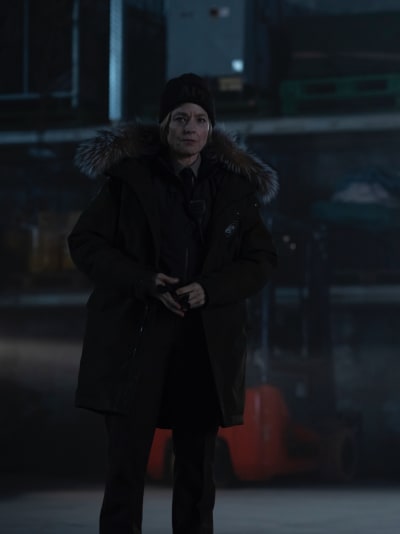
Prior business (again, pardon the pun) comes to the forefront when Danvers tasks Peter with retrieving Annie’s file from his father’s house.
He gets away with the theft — just barely — and it becomes clear that this is going to be one of Hawkes’ Menacing Redneck performances.
After a scene in which pioneer woman Rose follows the mysterious Travis into the tundra, Peter delivers the files to Danvers, who rewards him with some more exposition:
The subject of the cold case is Annie Masu Kowtok, or “Annie K.,” who was stabbed 32 times, and Navarro — during her days with Danvers’ Ennis PD — was the first on the scene.
Danvers reveals that Navarro was “obsessed” with the case — and that their relationship soured when the former refused to reopen it after taking over as chief.
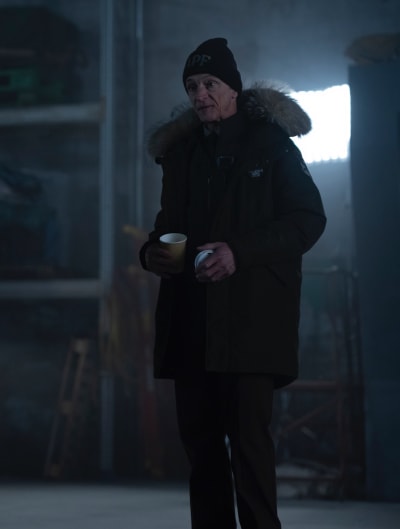
According to Danvers, it was the town itself that murdered Annie, and “no killer was ever gonna be found.”
It’s then revealed that the teen girl who lives with Danvers is not her biological daughter and that they share some trauma related to drunk driving.
Again, it’s an episode that devotes a lot of time to table setting, but what a table it is.
If you’re a fan of what True Detective has done in the past, then you’ve got to be excited about what’s in store here:
We have the troubled cops who don’t get along, one of whom enjoys blowing off steam via one-night stands and booze (both consuming it and pouring it in the gas tanks of domestic abusers), alongside one who’s trying — and frequently failing — to maintain a life of quiet domesticity.

They’re like a gender-swapped version of Matthew McConaughey and Woody Harrelson from True Detective Season 1, and we mean that as the highest praise.
We even have the customary hint of an otherworldly element to the case, this time in the form of visions of a one-eyed polar bear that confronts both Danvers and Navarro — to say nothing of Shoeless Travis and that helicopter looming menacingly over the research center.
And this time, there’s an added dimension of racial politics, which first bubble to the surface when our two main cops cross paths at Tsalas, and Navarro alleges that Danvers would’ve handled Annie’s case differently had the victim been white.
The action ends with one of the more unsettling images in the show’s history — a huddled mass of frozen, screaming corpses — made all the more creepy by the fact that it was discovered by Travis, who is no longer among the living.
Will this be the season that the series finally goes full-supernatural? We doubt it, but we’re certainly intrigued!
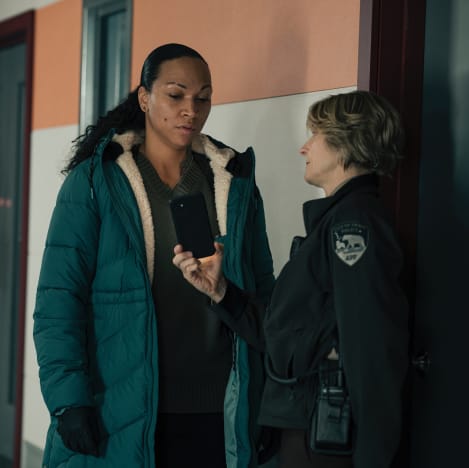
Of course, it’s impossible to draw solid conclusions about a season of True Detective until we have a firmer sense of where the mystery is headed.
Yes, Part 1 masterfully cultivated a sense of impending doom and gathering darkness (much more literally than in seasons past), but the show’s second and third seasons skillfully set the tone as well — and to say that those installments didn’t quite nail the dismount would be putting it very mildly.
If all these twists, turns, dreamlike visions, and encounters with the shadow realm add up to a satisfying whodunnit that demonstrates as much interest in the interior lives of its principal players as it does in the identity of the killer?
Well then, we could have another modern classic on our hands, a la True Detective Season 1.
If not, we may find ourselves frustrated by another beautifully eerie expanse that turns out to be as empty as the Arctic Circle.
Tyler Johnson is an Associate Editor for TV Fanatic and the other Mediavine O&O sites. In his spare time, he enjoys reading, cooking, and, of course, watching TV. You can Follow him on X and email him here at TV Fanatic.


























































![Mason Ramsey – Twang [Official Music Video] Mason Ramsey – Twang [Official Music Video]](https://i.ytimg.com/vi/xwe8F_AhLY0/maxresdefault.jpg)




















